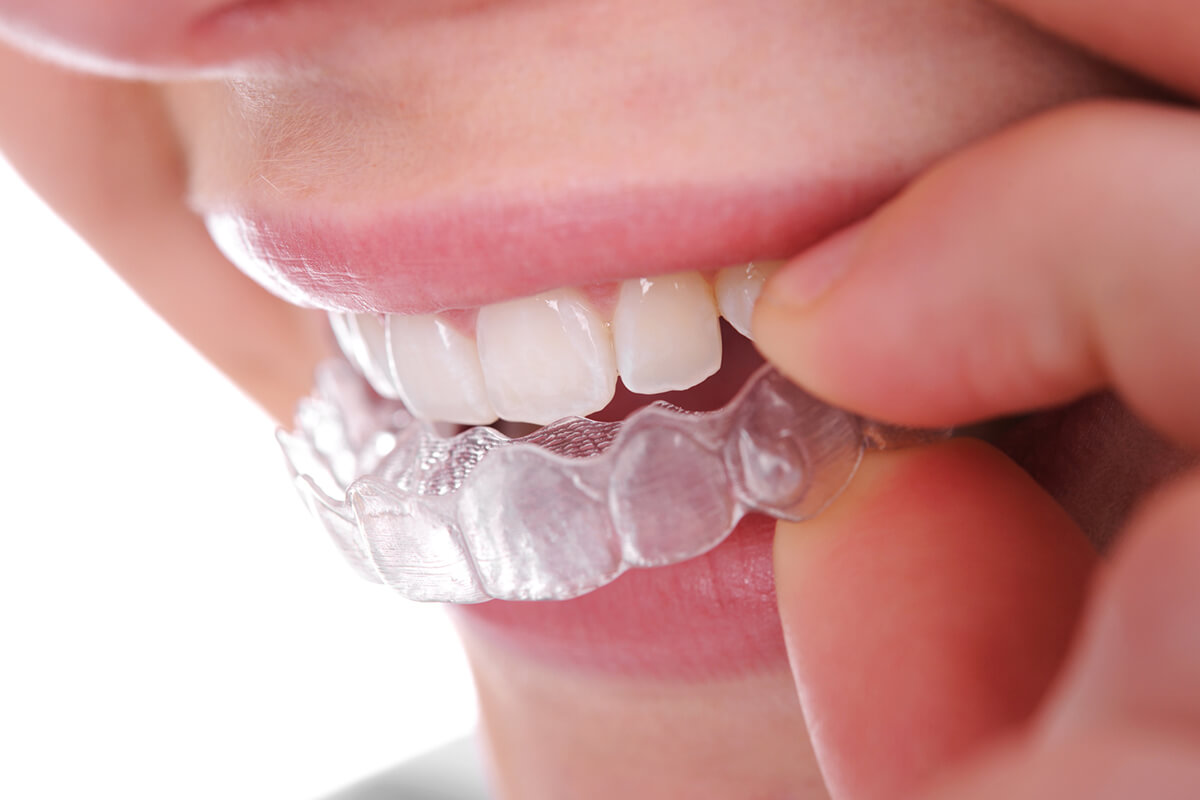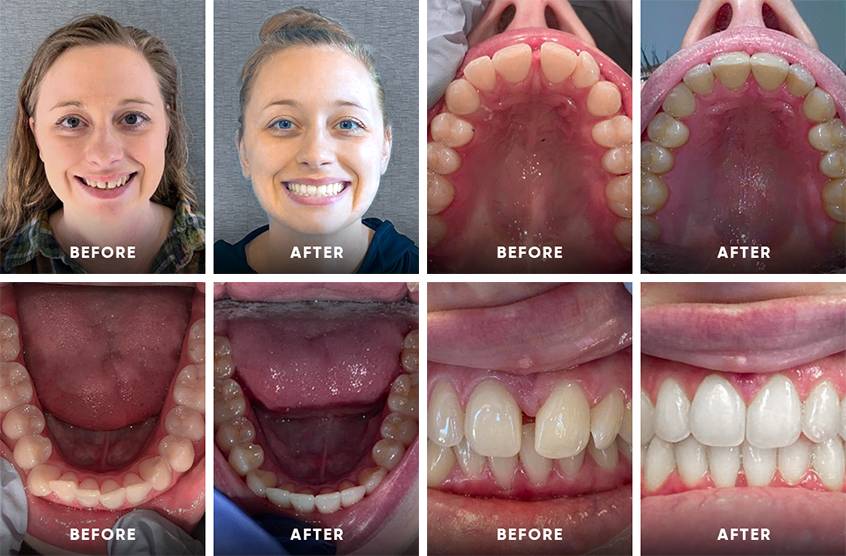Invisalign vs. Traditional Dental braces: Which Choice Is Right for You?
When thinking about orthodontic treatment, the choice in between Invisalign and conventional dental braces presents numerous essential aspects that merit mindful examination. Invisalign provides a very discreet option with detachable aligners, while traditional braces provide an extra noticeable yet efficient option for serious misalignment. Each choice encompasses unique advantages and downsides connected to looks, comfort, therapy period, and price. Comprehending these nuances is critical for making a notified choice that lines up with your individual preferences and way of life. The inquiry remains: which alternative will best satisfy your orthodontic demands and assumptions?
Overview of Treatment Options

In comparison, conventional dental braces contain steel brackets and cables that are adhered to the teeth. This method uses continual pressure with time to achieve positioning. While reliable for complex orthodontic problems, traditional braces call for normal sees for adjustments and can position challenges in preserving dental health as a result of the difficulty of cleaning about wires and brackets.
Both choices have their qualities, and the option usually hinges on specific dental conditions, way of living preferences, and person conformity. Inevitably, consulting an orthodontic professional is essential for determining the most suitable therapy strategy customized to private needs. Comprehending the nuances of each option can considerably influence the total success of orthodontic treatment.
Aesthetic Considerations
A significant element affecting the option in between Invisalign and traditional dental braces is the visual allure each treatment offers. Invisalign aligners are crafted from clear plastic, making them essentially unseen when put on.
In comparison, typical dental braces include steel brackets and cables, which can be much more obvious. While improvements in orthodontic innovation have caused the development of smaller sized brackets and tinted elastics, conventional dental braces still keep an even more conspicuous account. For some people, the exposure of dental braces might prevent them from seeking necessary therapy.
Ultimately, the selection between Invisalign and typical dental braces may pivot on personal choices regarding appearances. People who prioritize discretion usually lean toward Invisalign, while those who are much less concerned regarding presence might go with standard dental braces. Recognizing the aesthetic effects of each option is vital for making an educated decision that straightens with one's lifestyle and choices.
Convenience and Convenience

In regards to convenience, Invisalign aligners are removable, enabling people to appreciate their favorite foods without limitation and preserve ideal dental hygiene. Brushing and flossing are simplified, as the aligners can be gotten during these routines, whereas standard braces need careful maneuvering around cords and braces.
In contrast, traditional dental braces necessitate regular changes, making them less hassle-free for those with hectic schedules. Generally, the convenience and comfort of Invisalign make it an appealing option for numerous people seeking orthodontic therapy.
Therapy Duration and Performance
While both Invisalign and conventional dental braces are efficient in dealing with dental imbalances, the period of treatment can vary considerably between the two alternatives. Commonly, Invisalign treatment can take anywhere from 12 to 18 months, relying on the complexity of the situation. The clear aligners function by slowly shifting teeth right into their preferred placements, and normal follow-ups with an orthodontist aid make visite site certain development continues to be on the right track.
In contrast, conventional braces frequently require a longer commitment, usually ranging from 18 months to 3 years. This results from their set nature and the usage of braces and wires, which can be a lot more reliable for severe imbalances and complicated instances (Invisalign). The therapy performance of traditional braces is well-documented, as they enable for exact modifications and higher control over tooth movement
Eventually, the option between Invisalign and conventional braces may hinge on both the expected therapy duration and the certain dental issues at hand. Consulting with an orthodontist is important, as they can supply customized recommendations based upon specific requirements, making certain the selected technique aligns with desired timeframes and outcomes.
Cost Contrast and Insurance Choices
Expense plays a significant duty in the decision-making procedure for individuals considering orthodontic therapy, whether going with Invisalign or typical dental braces. Generally, the cost of Invisalign ranges from $3,000 to $8,000, while typical braces usually cost in between $2,000 and $6,000. Aspects influencing these expenses include the complexity of the case, the period of treatment, and geographical area.
Numerous oral insurance coverage strategies give partial coverage for orthodontic treatments, however the useful content specifics can differ extensively. Normally, traditional braces may be a lot more regularly covered by insurance plans contrasted to Invisalign, which some insurers categorize as check my blog a cosmetic procedure.
Furthermore, numerous orthodontic techniques offer versatile settlement strategies, making both therapy alternatives more available. Individuals ought to ask about prospective financing choices and discount rates for in advance settlements. Evaluating the total cost, including insurance coverage benefits and layaway plan, is essential for making a notified decision that aligns with both aesthetic choices and spending plan factors to consider.

Conclusion
In recap, the choice between Invisalign and typical dental braces depends upon multiple variables, including aesthetic preferences, convenience, therapy duration, and cost. Invisalign uses a discreet, detachable alternative that assists in dental health and nutritional flexibility, while standard braces may be extra appropriate for complex dental concerns and frequently come with a reduced price factor. Inevitably, examination with an orthodontist is important to assess private conditions and identify the most ideal therapy option for attaining ideal dental placement.
When taking into consideration orthodontic treatment, the option between Invisalign and standard braces provides several important variables that warrant careful analysis.Comparing Invisalign and standard dental braces discloses distinct treatment options for orthodontic adjustment.While both Invisalign and typical braces are effective in correcting dental misalignments, the duration of treatment can differ significantly between the two options.Cost plays a significant role in the decision-making procedure for people taking into consideration orthodontic treatment, whether opting for Invisalign or conventional braces.In recap, the selection in between Invisalign and standard braces pivots on numerous aspects, consisting of aesthetic choices, convenience, treatment duration, and cost.